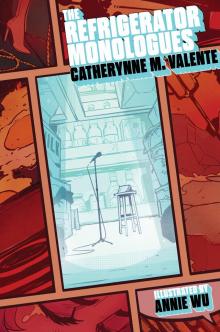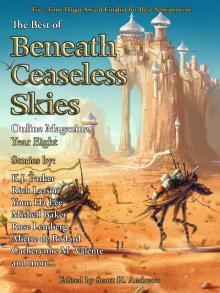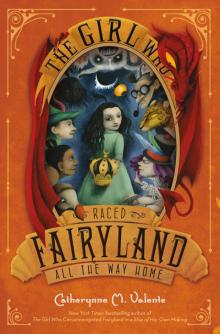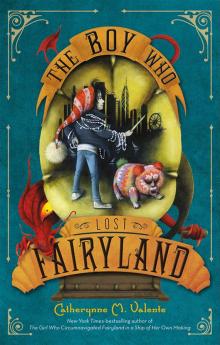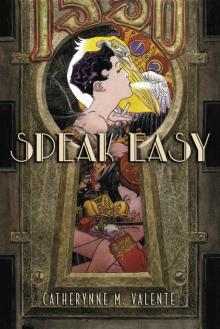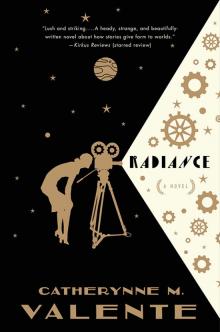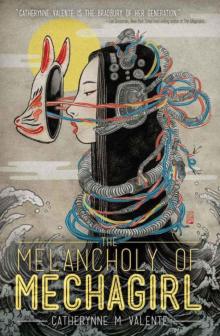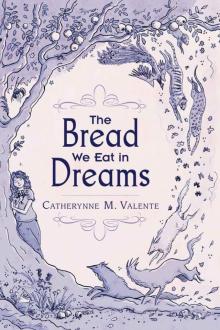


Inquisition, Page 20
Green, Toby
The absence of a permanent tribunal in Brazil reveals the extent to which the Inquisition was driven by imperatives in opposition to its supposed purpose. The Inquisition often ran at a loss, which acted as a drain on royal resources;93 this meant that it needed to concentrate its activities where the greatest profits were to be derived. This was why the Spanish were so keen to establish tribunals in America but ignored the Philippines, and why the Portuguese looked first to Goa and ignored Brazil. Thus the Inquisition was prey to the very material values for which it pretended such disdain; in its tortured way it helped to foster them.
However, when the Portuguese authorities realized the potential importance of their Brazilian colony, their attitude began to change. In 1591 the inquisitorial visitor Heitor Furtado de Mendonça was dispatched from Lisbon to the capital of the colony, Bahia, with a wide remit to inquire into the faith there and in Pernambuco. Over the course of the next four years, Mendonça would deal with 285 cases in Bahia and 271 in Pernambuco.94 In Olinda, the capital of Pernambuco, Mendonça even conducted two autos under powers which he had brought from Portugal.95 However his efforts almost bankrupted the Inquisition in Portugal and he was ordered to cut his visit short and not to bother visiting the outposts in Africa which had also been within his remit when he left Lisbon in 1591;96 again, financial worries came to the fore in dealing with heresy.
None of the above, however, should be taken as implying that the impact of the Inquisition was negligible in Brazil. After Mendonça’s visit in 1591 hundreds of conversos were denounced for Judaizing through to the middle of the 17th century.97 Although economic problems in Portugal meant that official visits were only made again in 1618 and 1627,98 the Inquisition could rely on its network of commissaries and familiars to supply information and make arrests. It was the conversos in the higher strata of society who tended to be taken, the ones who married into the Portuguese nobility; the poorer conversos, who tended to marry Africans and Indians, were often ignored.99 By the end of the 17th and beginning of the 18th century, when the discovery of gold in Minas Gerais had made the south of Brazil richer than the north, the Inquisition had transferred most of its attention to the area around Rio de Janeiro;100 Judaizers continued to be sent to Lisbon to be burnt long into the 18th century.101
The extraordinary geographical reach which the Portuguese and Spanish Inquisitions had achieved by the end of the 16th century marks out the Inquisition as different from other waves of persecution which preceded it. Moreover, many of the practices which it was censuring by 1600 were unconnected with its founding purposes, which derived from the mainly imagined organized heresy of the conversos in 15th-century Spain. What had been exported so successfully, and had grown so rapidly, was an idea: the idea of intolerance.
THE AUTO OF 1590 had achieved all the desired results: Governor Carvajal had been humiliated and had died shortly afterwards, and the Judaizers in his family had confessed their crimes against the faith. After Francisca de Carvajal had served her penance she asked if her son Luis the Younger could be brought to a monastery nearer to the family’s home in the suburb of Tlatelolco. Tlatelolco was largely occupied by Indians, and Francisca said that there was a need for a man in the house. She made her request through Friar Pedro de Oroz, whom the Inquisition had asked to watch over the family. The request was granted, and Luis was transferred to a school for noble Indians’, where he was employed to teach them Latin. He slept at his mother’s house, which was almost opposite.102
As far as Pedro de Oroz was concerned, the Carvajals were model converts and their reconciliation to the Church genuine. They heard mass daily. They confessed and took communion regularly. They wore the appropriate rosaries and scapularies above their sanbenitos. Images of the Virgin with the baby Jesus were kept in a special room in the house, and before them were placed fresh flowers. The Carvajals prayed fervently in keeping with their supposed Christian faith.103
Yet this was all an elaborate performance for the benefit of Oroz and for the friars who ran the school in Tlatelolco. Their residence in an Indian neighbourhood made it easier for the Carvajals to perform Jewish rituals unobserved. They kept the Passover of 1592 all together, inviting other crypto-Jews of Mexico City to celebrate it with them. Luis believed fervently that the Messiah would come to earth in 1600 and preach to the whole world.104 Their apparent conversion to Christianity was a fabrication to buy time from the Inquisition before the great day of redemption came.
The devotion of the Carvajals to the Jewish faith shows just how far the Inquisition had been counterproductive. Of course some of these crypto-Jews would have felt genuine attachment to their ancestral religion without the persecution which they and their relatives experienced, but the Inquisition was also a significant factor. Where the conversos of Spain had had the potential for genuine integration into Christian life, their marginalization and persecution fed an atmosphere in which heresy was more likely. The same was true in Portugal, where the pogroms of 1506 and the establishment of the Inquisition ensured that many potential genuine converts to Christianity recoiled.
Far from eradicating heresy, persecution was playing a key role in creating it, and ensured that many conversos in Portugal had a genuine attachment to Judaism by the end of the 16th century. It was from these people that the Jewish community in Amsterdam was founded in the late 16th and early 17th centuries, the community from which Jews moved to England in the time of Cromwell. Just as some have argued that the collective identity of African-Americans derives from their shared heritage of slavery,105 so, among the conversos, it was perhaps the shared experience of the Inquisition which made them into a cohesive group and pushed many of them towards re-embracing Judaism over a century after some of their ancestors had tried to accept Christianity.
For the Carvajals, however, the double life could not last. In November 1595 the Inquisition began to receive more information about the family. Manuel de Lucena deposed that he had seen Carvajal the Younger, Francisca and Isabel observing the Jewish sabbath and praying in the direction of Jerusalem, as the Jewish faith recommended.106 Luis was again thrown into the inquisitorial jail, but this time the threat was far greater than in 1589. There was no illustrious relative for the Inquisition to crush. If Luis and his siblings were found guilty they were liable to be ‘relaxed’.
At first Luis denied everything, but then his messianic faith got the better of him. He confided to his cellmate, the priest Luis Diaz, his faith in Judaism; Diaz was an inquisitorial spy and the conversations were recorded by inquisitorial officials as evidence against him in February 1596;107 then he began to send messages carved into avocado stones which were uncovered by his jailer and led to his self-incrimination before the inquisitors.*7 This time there was to be no way back. After gruesome torture Luis was sentenced to be ‘relaxed’. He would be joined in his fate by his sisters Isabel and Leonor.
The auto took place on 8 December 1596. The three siblings were paraded through the streets of Mexico City on a horse. Of Luis it was said ‘en route he showed signs of having converted and took a crucifix in his hands’.108 This was enough to spare him the ultimate penalty of being burnt to death, and, together with his sisters, he was garrotted before being burnt in front of the crowds.109
The fate of the siblings seems a long way from the imprisonment of their great-uncles Alvaro and Jorge in Évora; the connections were the fear that permeated life under the Inquisition and the Governor Luis. Yet where his uncle had been an unpleasant man, Luis the Younger was more innocent. He suffered from sexual frustration into his twenties, experiencing wet dreams at night which he exculpated by performing Jewish rites.110 His belief in the holy destiny of his family and that he was living through the ‘last time’ before the coming of the saviour were perhaps redirections of this thwarted and dangerous energy. Yet they were also testament to an era of desperation among a social group that rightly saw itself as persecuted by those more powerful.
In the whitewashed streets of Mexico City d
emonization had been sanctioned by morality. Yet in the end all that had been created by pursuit of the ‘enemy’ was a vein of fundamentalism which conceived nothing but hatred for the codes of those among whom the pursued had been born.
Chapter Seven
THE ISLAMIC THREAT
What do you want me to say, do you want me to say that I have been a Muslim? I know nothing . . . I admit that the truth is whatever your graces say.
Teruel, 1581
AT THE END OF the 16th century the story of the Inquisition describes a circle. In Spain, the peak of the converso and Lutheran threat was past.*1 For a moment, though, we should remember the conversos of the 15th century, these miserable souls thought of as Jews by the Christians and believed Christians by the Jews. A hundred years later it was the turn of the moriscos, the descendants of the converted Muslims, to be seen as the greatest threat to national security in Spain. A category was ready and waiting for them: the Old Christians in Spain thought them Muslims: many of the Muslims of North Africa considered them Christians.
What of the Christian opinion of this fated remnant of Iberia’s Muslim civilization? The bishop of Segorbe in the kingdom of Valencia compiled a report in 1587 summarizing the general view. The moriscos never confessed their sins. They married as many women as they could support. They believed that if they killed a Christian they would be saved. They circumcized themselves. They observed the Muslim fasts such as Ramadan and ignored all the Christian fasts. They never ate pork or drank wine.1 They were not Christians.
Other reports of the time were just as scathing. The moriscos had to be dragged by bailiffs to church. Once inside they always wore their worst clothes with filthy collars. They sat with their backs to the altar. They covered their ears with their hands when sermons were preached. They made obscene gestures when the priest raised the host. Many of them ploughed their fields and sewed their crops on Sundays and Christian feast days.2
Many prominent churchmen had seen at first hand how the moriscos retained their faith in Islam. When the bishop of Tortosa visited the morisco settlement of Vall de Artos in Aragon in 1568 the moriscos angrily told him that Philip II oppressed them by forcing them to be Christians. When the bishop jokingly replied, ‘Are you telling me you’re all Moors?’ some of them replied, ‘Yes we are!’ and when he asked them, ‘Are you speaking just for yourselves?’ they answered, ‘We all say the same’. At that the whole town erupted and yelled with the few outspoken ones, ‘We all say the same!’3
As we shall see, attempts at evangelizing these folk had been worse than useless. They had been abandoned to their lot in the hills. Here the more rotund emissaries of the national religion preferred not to tread, so there had been few wholehearted attempts to integrate these new sheep in the larger flock. Thus it was that the Islamic threat had been ignored until it was time to turn on it as evidence of the perils of this world.
TYPICAL OF THE WAY in which the new fear of moriscos manifested itself were events in Teruel. It had been here, we may recall, that the Inquisition had first come to Aragon in 1484, when Juan Garces de Marcilla’s personal hatred of his in-laws had brought him to play his part in the institution’s history.*2 Now once again this small town high in the hinterland between the Mediterranean coast and the Castilian steppe proved to be a bellwether for the forces at work in Spain; almost one hundred years after Marcilla’s purge of his enemies, there would be little to suggest that the motivations of the participants in the inquisitorial dance of resentment and revenge had changed.
In Teruel much of the original Muslim population had converted to Christianity and adopted Christian customs voluntarily in the 1400s.4 This process had continued in the early 16th century when again Muslims in the town had converted voluntarily,5 and long before the violent forced conversions of the 1520s. These events made it clear that moriscos in Teruel had initially come freely to Christianity. Such was their sincerity that they were even known by all as Old Christians.6
There can therefore be no doubt that these converts should have been welcomed by the church, yet the problem for the moriscos was to be the same as that the conversos had faced the century before: conversion turned them into an ambiguous social group which could easily be targeted at times of unease. Thus the sincerity of the conversions in Teruel did not prevent the Inquisition from bearing down in the 1580s and investigating the town’s moriscos. No one had previously doubted that these people were Christians; the task was to discover how it was that such apparently genuine converts had been led back towards Muslim apostasy. Could it be the case that none of this morisco class could be trusted, and that all of them bore the seeds of heresy in their hearts?
In June 1581 evidence began to be received in Teruel against one Diego de Arcos. Arcos lived in the neighbourhood of San Bernardo along with the other moriscos whose families had converted voluntarily over 150 years before.7 Arcos’s sister Luisa Caminera came to tell the inquisitors that ‘she had always had the fantasy [sic] and intention to come to discharge her conscience before the inquisitors but had not dared to come before for fear of the moriscos of the street’. Almost all the residents of San Bernardo, she said, lived as Muslims. The moriscos of Teruel had two aljamas (communities), one for those who were single and one for those who were married. Arcos prayed in the Muslim fashion and fasted during Ramadan.
The following year another of Diego de Arcos’s siblings, his somewhat ironically named brother Joan de Arcos,*3 denounced him. By now Diego had been arrested, and Joan said that he had told his brother many times before his capture that he should convert properly to the Christian faith and leave Islam, since ‘this was the true path to save his soul and his property’ – of the latter, at least, there could be no doubt.
Slowly, the evidence built. Joan announced that the entire community lived as Muslims and that they had all sworn to one another to deny it even if they were seized by the inquisitorial authorities. Then Gil Pérez of the town of Gea de Albarracín described how in 1577 large numbers of moriscos had come from Teruel to celebrate a wedding at Gea. There they had eaten turnovers and honey and figs and raisins, and listened to an alfaqui (Islamic scholar) from Teruel give high praise to Islam.
With such clear evidence of this Muslim conspiracy further delay would have been dangerous. The authorities arrested the renegade moriscos and threw them into the inquisitorial jail in Valencia. Now investigations could proceed apace, and evidence of the conspiracy be collected.
However, when they investigated Diego de Arcos, the inquisitors had a bit of a shock. Arcos declared himself to be an Old Christian; indeed, he said that all the people of Teruel were Old Christians. He was able to cross himself. He could say the paternoster and the Ave Maria in Latin. He clearly came from the group of converts in Teruel who were seen as Old Christians, and had a decent knowledge of Christianity.
None of this, however, discouraged the inquisitorial prosecutor, who formulated fifteen charges against Arcos. He had consulted an alfaqui in Gea de Albarracín. He was renowned as the most dangerous Muslim of Teruel. He alone was responsible for the fact that many of the moriscos of the town were not good Christians. He used halal butchers and had plotted to kill another morisco who had made denunciations to the Inquisition. He kept the fast of Ramadan and dressed smartly for Muslim festivals. He mocked moriscos who had become devoted Christians. Last of all, although he was a morisco he had the temerity to claim that he was an Old Christian.
It might be expected that such a terrible apostate would show little sign of Christian grace. Arcos denied everything and was tortured. Put into the potro, he was given an extraordinary twelve turns of the rope as his leg was dragged through the gap in the rungs of the table. But in spite of appalling agonies, Arcos repeatedly protested his innocence: ‘He said: he is a Christian and has lived as a Christian and does not know anything more’. Asked to tell the truth so that the torture would not continue, he said: ‘I have already told it, Illustrious Gentlemen’. He said: ‘I will say everything wh
ich you tell me to’. He said: ‘I am already dead and I will say everything you want me to’. and ‘I will condemn myself to whatever you want’. As the jars of water were poured down his throat, he said, ‘What do you want me to say, do you want me to say that I have been a Muslim? I know nothing . . . I admit that the truth is whatever your graces say’. Eventually he said, ‘Ay, I am dying here’.
As the torture continued, the inquisitorial officials probed the extent of Arcos’s knowledge of Arabic. This consisted of one word which he had overheard two moriscos mention in Teruel. Here was proof of his origins in the Old Christian community, since Arabic was the common language of the overwhelming majority of moriscos who had converted in the 1520s. But of course in the agonies of the potro Arcos eventually did confess. He said that he had been converted to Islam by his wife; yet this confession of his secret apostasy was littered with phrases such as ‘By the body of the Christian God!’




